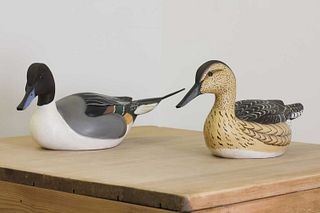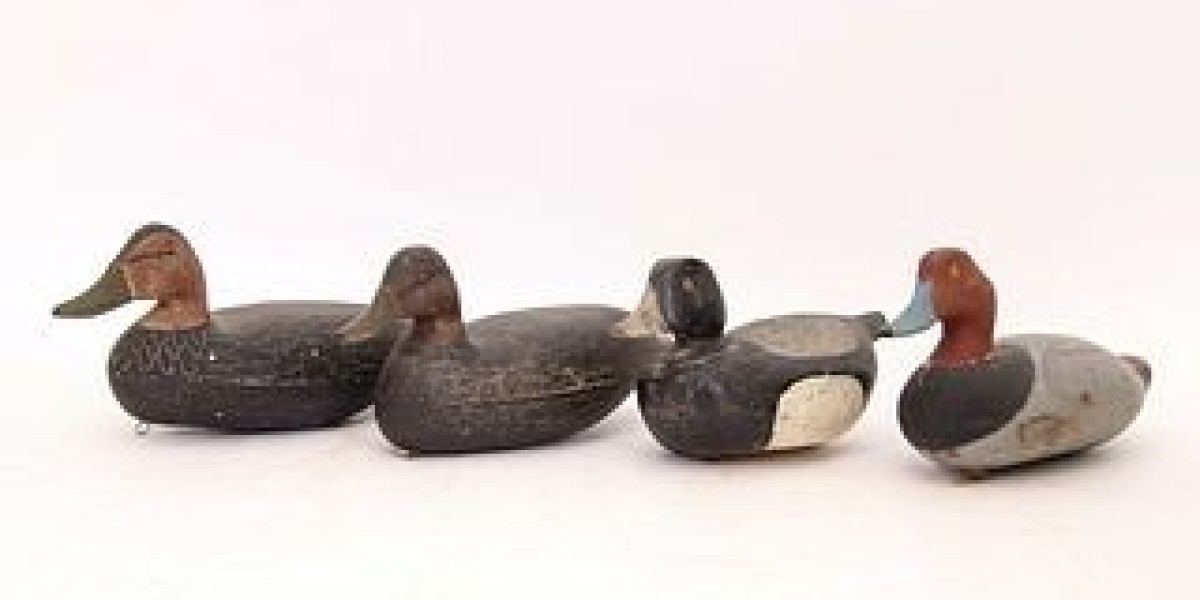
Introduction
The art of duck hunting is not only about patience and skill but also about the tools of the trade. Among these tools, one of the most iconic and historically significant is the wooden duck decoy. Precision-crafted and frequently regarded as works of art, these decoys have a long history and continue to serve a useful role in modern waterfowl hunting. In this post, we will look at the history and use of duck decoys, as well as where you can get these one-of-a-kind and real artifacts.
The History of Duck Decoys
Duck decoys have been around for over a thousand years. Ancient Egyptians employed wooden decoys to attract ducks for hunting, and Native American groups like the Inuit created their own replicas for the same purpose. However, the wooden duck decoy prospered in North America during the late nineteenth and early twentieth century.
Waterfowl market hunting became a big sector in the late 1800s, fueling the demand for effective decoys.
Carvers from all over began to make one-of-a-kind, extremely detailed wooden decoys that not only drew ducks but also highlighted their artistic abilities. Elmer Crowell, Lemuel T. Ward, and Charles Perdew were among the most well-known carvers of the day, and their decoys are now highly sought for by collectors.
The hunting use of wooden duck decoys has evolved over time. Hunters used to lay out vast spreads of decoys on the river to draw passing flocks of ducks into close shooting range. While the hunting landscape has evolved with the introduction of more modern materials such as plastic decoys, hunters still cherish old wooden decoys for their authenticity and aesthetic appeal.
The Artistry of Wooden Duck Decoys
The beauty and skill that goes into the manufacture of wooden duck decoys is one of the most appealing parts of them. Each decoy is a one-of-a-kind work of art, hand-carved from wood and painstakingly painted to imitate various duck species. Carvers devote attention to every detail, from the feather patterns to the lifelike glass eyes, resulting in decoys that are not only useful but also collectible works of art.
The wood used in carving decoys varies, but popular alternatives include cedar, pine, and basswood. The type of wood used can affect the buoyancy and endurance of the decoy, making it an important issue for both hunters and collectors.
Using Wooden Duck Decoys in Modern Hunting
While wooden duck decoys are not the first option for all duck hunters, they do have a place in the hunting world. Many hunters enjoy the nostalgia and authenticity that handcrafted wooden decoys bring to their hunting experience. The realistic aspect of these decoys can be very successful in drawing wary ducks, bringing a sense of challenge and excitement to the hunt.
Where to Purchase Wooden Duck Decoys
If you're interested in purchasing wooden duck decoys for hunting or collecting, several options are available to you:
- Specialty Carvers:Beautiful wooden duck decoys are created by several skilled artisans and carvers. Seek out local carvers or browse online craft marketplaces like Etsy, Bidsquare, and others to discover one-of-a-kind decoys.
- Antique Stores and Auctions: For collectors looking for vintage or antique wooden duck decoys for sale, antique stores and online auctions, like eBay, can be excellent sources.
- Hunting and sporting goods businesses still sell wooden decoys, appealing to hunters who appreciate the heritage and artistry of these artifacts.
- Duck Decoy Shows and Exhibitions: Attend decoy shows and exhibitions in your region to connect with carvers, collectors, and enthusiasts. These events often feature a wide variety of decoys, both old and new.
Conclusion
Wooden duck decoys are more than just hunting gear; they represent the history, artistry, and workmanship of waterfowl hunting traditions. Whether you're a serious hunter or a fine art collector, these decoys offer a unique blend of form and function that continues to captivate aficionados. You can find the right wooden duck decoy to meet your needs and admiration for this ancient workmanship by researching local craftspeople, vintage shops, and online marketplaces.


